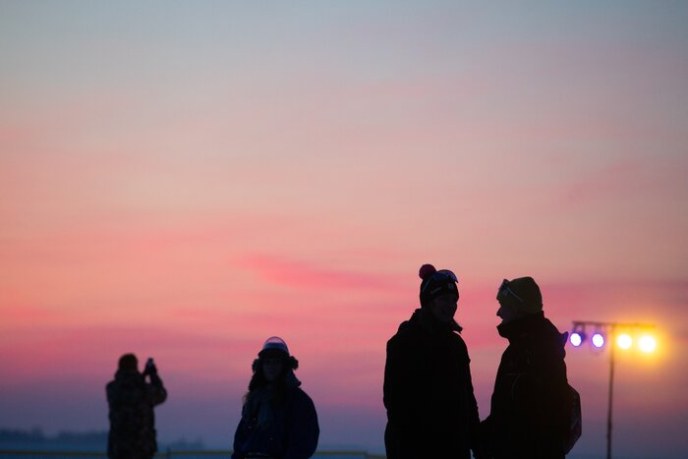Accessibility

Organizing an accessible event requires careful planning and awareness of the needs of different people. This page will help you ensure the accessibility of the event.
1. Location and facilities
- Choose a venue that is easily accessible by public transport and offers enough parking spaces for people with reduced mobility.
- Make sure that the space has accessible passage, an elevator or ramps if necessary and enough space to move around with a wheelchair.
2. Advertising and Pre-Event Communication
Key Guidelines:
Provide accessibility information in all communication – on websites, advertisements, and invitations. Also, mention any potential accessibility challenges.
Make information easy to understand:
- Use plain language if the event is large and attracts a diverse audience.
- Utilize clear images and symbols (e.g., accessible routes, elevators).
Offer essential information in multiple languages
- Consider translating essential information such as safety guidelines, accessibility details, and event schedules.
- At a minimum, include Finnish, Swedish, and English to ensure broad accessibility.
- Additional languages can be included based on the event’s audience and needs.
Ensure websites and digital materials are accessible:
- Use clear fonts and good color contrast.
- Avoid relying solely on images to convey information – always include a text alternative.
- Provide captions for videos whenever possible.
Clearly describe the event venue:
- Maps and images help participants plan their visit in advance.
- The location and features of accessible restrooms are especially important.
Provide contact details for the person responsible for accessibility
- Ensure they can be reached by phone and email.
Following these guidelines ensures that event communication is clear and easily accessible to all participants.
3. Digital Accessibility
Websites, registration forms, and event materials should meet accessibility requirements (WCAG 2.1), but the basics of accessibility can be implemented even without technical expertise.
Websites and Digital Materials:
- Ensure that websites are screen reader-friendly and allow text size adjustment.
- PDF materials should be structured clearly and compatible with screen readers.
- Alongside images, always provide a text alternative to ensure information is accessible to all.
Live Streaming and Virtual Events:
- Captions – If possible, add captions to streamed content. Automated captions can be a good starting point, but accuracy should be verified.
- Clear instructions for remote participants – Provide easy-to-find guidance on how to follow and engage with the stream. Ensure compatibility with mobile devices and slower internet connections.
- Sign language interpretation or live captioning – Consider providing these options for spoken segments, particularly for large or publicly funded events. Inform participants in advance if this service is available.
By following these steps, digital event experiences become more accessible and practical for events of different sizes.
4. Sensory Accessibility
- Make sure that the event has quiet areas for those who need a break from the soundscape.
- Offer information about how participants can ask for help if they need sign language interpretation, for example.
5. Safer Space Principles
A safer space refers to an event environment where all participants feel welcome, respected, and safe. It is the responsibility of the event organizer to create an atmosphere where discrimination, harassment, and inappropriate behavior have no place.
How to Ensure a Safer Space?
Clear Principles and Communication
- Establish safer space principles for the event and publish them on the website as well as visibly in the event venue.
- Communicate clearly that discrimination, harassment, or inappropriate behavior will not be tolerated.
Low-Threshold Reporting Channels
- Provide participants with a clear way to report harassment or uncomfortable situations. This can include an anonymous feedback channel or direct contact with designated safety personnel.
- Ensure that staff members know how to respond if they receive a report of inappropriate behavior.
Training for Staff and Organizers
- Train event staff and volunteers to recognize discrimination and harassment and to take appropriate action when necessary.
- Appoint a designated safety officer or team that participants can turn to if needed.
Participant Responsibility
- Encourage attendees to respect each other’s space, boundaries, and well-being.
- Make it clear that all participants share responsibility for creating and maintaining a safer space.
6. Tickets and registeration
- Offer online registration and a possibility to purchase tickets in advance.
- Make sure that ticket sales points are accessible and that the staff is aware of matters regarding accessibility.
7. Services
- Offer accessible restrooms and necessary equipment such as wheelchairs and aids for people with impaired vision.
- Train the staff to offer help and guidance for those who need it.
8. Program and communication
- Make sure that all performances and briefings are accessible. For example, use descriptions of all visual elements.
- Offer subtitles or sign language interpretation, if possible.
9. Accessible passageways
- Clearly mark accessible routes, including pathways to different event areas, accessible restrooms, and service points.
- Provide detailed information in advance about the width of accessible pathways.
- Ensure accessibility regardless of weather conditions.
- For winter events, make sure pathways are sanded and free of snow.
- Avoid obstacles – Event furniture, movable stands, or other elements should not block accessible routes.
- Secure cables and other ground-level elements to prevent tripping hazards and ensure smooth passage.
- If accessible routes include detours, they must be properly signposted with a continuous guidance path.
10. Collecting feedback
Feedback helps improve event accessibility. Accessibility-related feedback can be integrated into general event evaluations.
Principles for Accessible Feedback Collection
Offer multiple ways to provide feedback:
- Digital form (screen reader-compatible, plain language)
- Verbal feedback
- Anonymous or paper-based options
Use clear and accessible language.
Inform participants about feedback options in advance and ensure that giving feedback is easy for everyone.
Adjusting feedback collection based on event size:
- For smaller events: A simple and user-friendly feedback method is sufficient.
- For larger or publicly funded events: Providing multiple, accessible feedback options is recommended.
A well-designed feedback process supports the continuous improvement of event accessibility while considering available resources.
